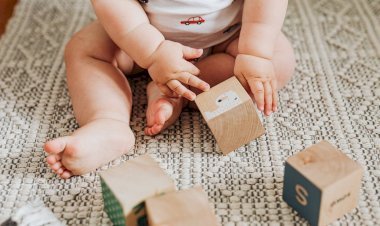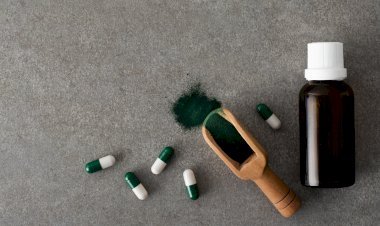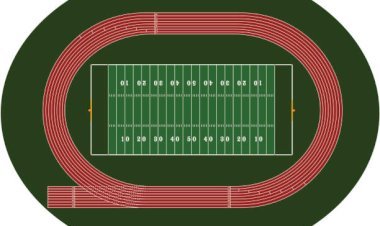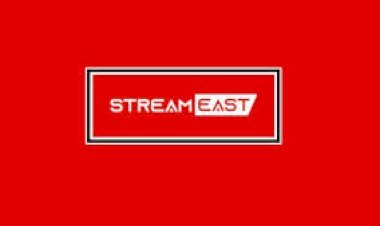Non Toxic Car Seats Explained: Materials, Safety & Best Picks
Discover the best non toxic car seats in 2025. Learn about safe materials, certifications, pros, cons, and top picks for healthier child travel.
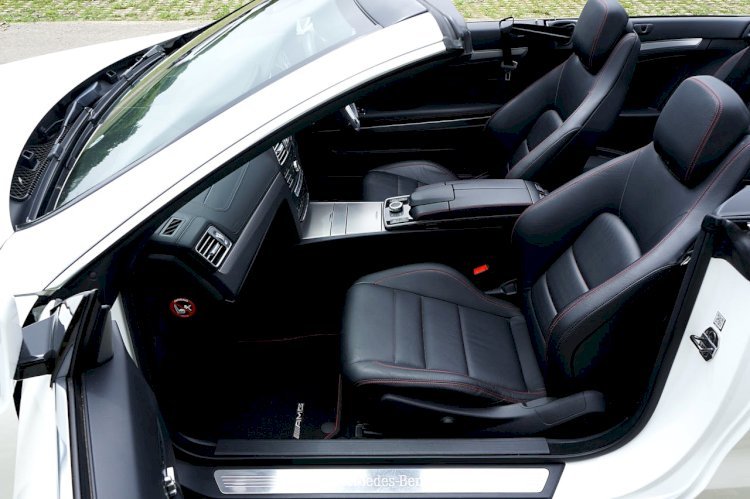
When it comes to your child’s safety, choosing the right car seat is one of the most important decisions you will make. While all car seats must meet crash safety standards, not all are created equal in terms of the materials used. Many parents are becoming increasingly aware of the chemicals hidden in traditional car seats—like flame retardants, VOCs, and phthalates—that can pose long-term health risks.
That’s where non toxic car seats come in. These seats are designed with safer, eco-friendly materials while still providing maximum crash protection. In this guide, we’ll explain what makes a car seat non toxic, the safest materials to look for, and our top picks for 2025.
Why Non Toxic Car Seats Matter
Most parents assume that if a car seat is on the market, it must be completely safe. While it’s true that all car seats must pass federal crash safety standards, the hidden chemical load is often overlooked.
-
Harmful Chemicals Commonly Found:
-
Flame Retardants – Added to meet flammability standards, but linked to hormone disruption and developmental concerns.
-
Volatile Organic Compounds (VOCs) – Off-gas from foams and adhesives, impacting indoor air quality.
-
Phthalates & PVCs – Found in plastics and vinyl covers, associated with respiratory issues.
-
PFAS (Forever Chemicals) – Sometimes used for stain resistance, but persistent in the body and environment.
-
Since babies and toddlers spend significant time in their car seats, reducing exposure is crucial. Non toxic seats help minimize risks while promoting safer travel.
Key Features of Non Toxic Car Seats
Not all “eco-friendly” or “green” claims are reliable. When shopping, here are the must-have features to consider:
-
Safe Materials – Organic cotton, wool, plant-based foams, and BPA-free plastics.
-
Trusted Certifications – GREENGUARD Gold, OEKO-TEX Standard 100, JPMA Certified.
-
Crash-Test Compliance – Meets or exceeds FMVSS 213 safety regulations.
-
Breathability – Ventilated fabrics that reduce sweating and irritation.
-
Durability – Convertible seats that grow with your child, saving costs long-term.
Materials Used in Non Toxic Car Seats
The material composition of a car seat plays the biggest role in determining whether it’s non toxic. Here are the top safe materials:
-
Organic Cotton – Free of pesticides and harsh dyes, gentle on sensitive skin.
-
Wool – Naturally flame-resistant, eliminating the need for chemical retardants.
-
Plant-Based Foam – Made from soy or other plant oils, replacing petroleum-based foams.
-
BPA-Free Plastics – Avoiding harmful chemical additives.
-
Natural Dyes & Finishes – Reduce chemical exposure and skin irritation.
How to Identify a Truly Non Toxic Car Seat
The term “non toxic” can be misleading, as some brands rely on greenwashing. To avoid falling for marketing hype, check for:
-
Certifications:
-
GREENGUARD Gold – Tested for low chemical emissions.
-
OEKO-TEX Standard 100 – Ensures fabrics are free from harmful substances.
-
JPMA Certification – Confirms safety and quality standards.
-
-
Brand Transparency: Look for companies that publish their material choices and safety test results.
-
Red Flags: Phrases like “eco-friendly fabrics” without certifications, or vague claims about “green technology.”
Best Non Toxic Car Seats in 2025
Parents in 2025 have more choices than ever for safer seating options. Below are the top picks trusted by families:
1. Nuna Rava
-
GREENGUARD Gold certified.
-
No added flame retardants.
-
Rear and forward-facing convertible.
-
Price: ~$500.
2. Clek Foonf
-
Uses OEKO-TEX certified fabrics.
-
Steel frame for enhanced crash safety.
-
Narrow design fits three across.
-
Price: ~$450–$500.
3. UPPAbaby Mesa (Infant Seat)
-
OEKO-TEX certified wool blend.
-
Ideal for newborns.
-
Easy installation with SmartSecure system.
-
Price: ~$350–$400.
4. Britax Advocate ClickTight (SafeWash Edition)
-
Non-toxic, machine-washable covers.
-
Advanced crash protection features.
-
Convertible seat for long-term use.
-
Price: ~$350–$400.
5. Maxi-Cosi Pria Max Eco
-
Made with recycled, eco-friendly fabrics.
-
GREENGUARD certified.
-
All-in-one design (infant to booster).
-
Price: ~$400–$450.
Comparison Table of Non Toxic Car Seats (2025)
| Brand & Model | Material Used | Certification | Age/Weight Range | Price (Approx.) |
|---|---|---|---|---|
| Nuna Rava | Organic fabrics | GREENGUARD Gold | Birth–65 lbs | $500–$550 |
| Clek Foonf | Wool blend | OEKO-TEX | 14–65 lbs | $450–$500 |
| UPPAbaby Mesa | Merino wool | OEKO-TEX | 4–35 lbs | $350–$400 |
| Britax Advocate SafeWash | Non-toxic cover | GREENGUARD | 5–65 lbs | $350–$400 |
| Maxi-Cosi Pria Max Eco | Recycled fabrics | Eco Care / GREENGUARD | 4–100 lbs | $400–$450 |
Pros and Cons of Non Toxic Car Seats
Pros
-
Reduced chemical exposure.
-
Safer for children with allergies or sensitive skin.
-
Environmentally responsible.
-
High-quality construction and durability.
Cons
-
Higher price than standard models.
-
Limited availability in some regions.
-
May lack trendy color/design options.
Non Toxic vs Regular Car Seats: (Comparison)
| Feature | Non Toxic Car Seats | Regular Car Seats |
|---|---|---|
| Materials | Organic cotton, wool, recycled fabrics, BPA-free plastics | Polyester, vinyl, petroleum foams, PVC |
| Chemicals | Flame-retardant free, low VOCs, no PFAS | Often treated with flame retardants, phthalates, PFAS |
| Certifications | GREENGUARD Gold, OEKO-TEX, Eco Care | Few or none, mostly safety-only |
| Health Impact | Lower chemical exposure, safer for sensitive skin | Higher risk of allergies, respiratory irritation |
| Comfort | Breathable, hypoallergenic fabrics | Can trap heat, less breathable |
| Price Range | $300–$600 (premium but long-term value) | $100–$300 (budget-friendly, but less safe) |
| Longevity | Convertible & eco-friendly options available | May wear faster, limited eco-focus |
Cost vs. Safety: Are Non Toxic Car Seats Worth It?
Some parents hesitate due to cost, as non toxic car seats generally range between $300–$600, compared to budget models around $100–$200.
However, consider:
-
Health Benefits: Lower exposure to harmful chemicals.
-
Longevity: Convertible seats last from infancy to early childhood.
-
Peace of Mind: Safety outweighs cost for many parents.
The upfront investment pays off in both safety and long-term use.
Tips for Parents Choosing a Non Toxic Car Seat
-
Always verify certifications.
-
Match the weight/age range to your child.
-
Consider a convertible seat for long-term savings.
-
Look for easy-to-clean covers.
-
Buy from trusted retailers to avoid counterfeits.
Quick Checklist: Buying a Non Toxic Car Seat
1. Check Certifications
-
GREENGUARD Gold
-
OEKO-TEX Standard 100
-
JPMA Certified
2. Look at Materials
-
Organic cotton, merino wool, recycled fabrics
-
Flame-retardant free
-
BPA-free plastics
3. Safety Standards
-
FMVSS 213 crash test approved
-
Side-impact protection
-
Steel or reinforced frame
4. Age & Weight Range
-
Infant, convertible, or all-in-one?
-
Choose based on your child’s growth stage
5. Ease of Cleaning
-
Machine-washable covers
-
Non-toxic, stain-resistant fabrics
6. Budget Consideration
-
Expect $300–$600 for certified non toxic models
-
Convertible options save money long-term
FAQs
1. What makes a car seat non toxic?
Seats made without harmful flame retardants, PFAS, and VOCs, using certified safe fabrics.
2. Are flame retardants always harmful?
Not all are equally dangerous, but many synthetic versions raise concerns. Wool offers natural flame resistance without chemicals.
3. Which brands offer 100% flame-retardant-free car seats?
Nuna, Clek, and UPPAbaby are among the most transparent brands.
4. Are non toxic car seats more expensive?
Yes, but they are an investment in your child’s health and safety.
5. How do I clean and maintain a non toxic car seat?
Choose models with machine-washable covers, like Britax SafeWash. Always follow manufacturer instructions.
Conclusion
In today’s world, parents are more conscious than ever about the materials surrounding their children. Non toxic car seats provide a safer, healthier, and eco-friendly alternative without compromising crash safety. While they may cost more upfront, the benefits of reduced chemical exposure, durability, and peace of mind make them well worth the investment.
For 2025, standout choices include the Nuna Rava, Clek Foonf, and UPPAbaby Mesa, all of which combine cutting-edge safety features with chemical-free designs. Ultimately, choosing the right non toxic car seat means choosing healthier rides for your child—today and for years to come.
Read More: Car Hire Business Plan: Steps, Costs & Profit Potential

 alissaperry
alissaperry 






